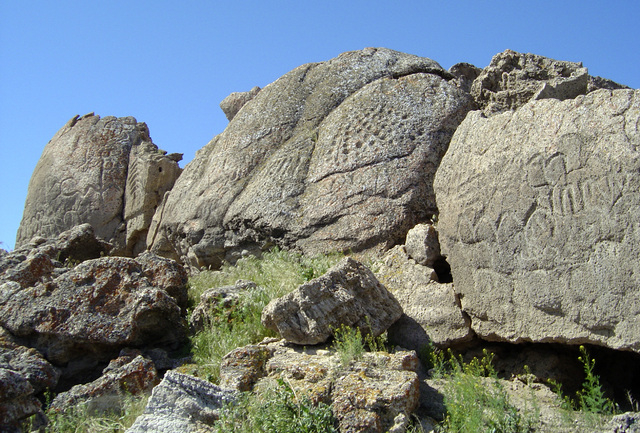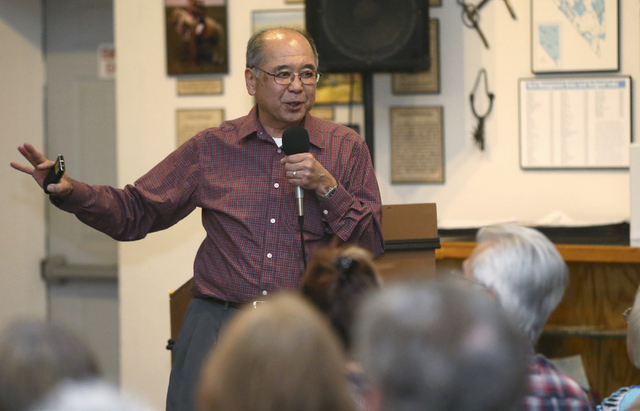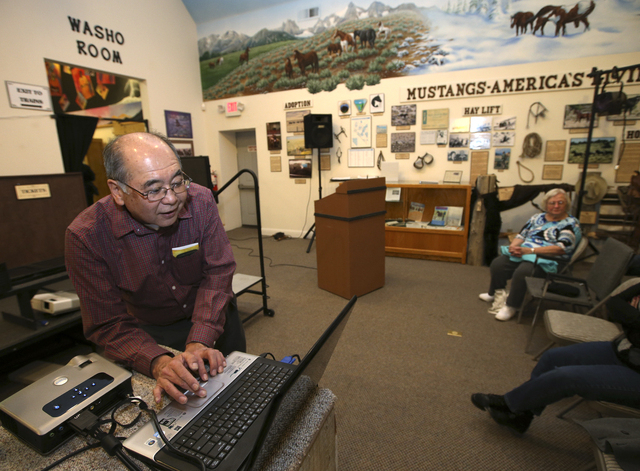Nevada’s ancient artists



Editor’s Note: Nevada 150 is a yearlong series highlighting the people, places and things that
Nevada may be in the midst of a celebration of 150 years of statehood, but a recent announcement that the oldest petroglyphs in North America were identified on the Pyramid Lake Paiute Indian Reservation show just how far back human roots go in the Silver State.
The petroglyphs, located along the shores of what was once Lake Winnemucca, are at least 10,500 years old and possibly thousands of years older, said Eugene Hattori, curator of anthropology at the Nevada State Museum and co-author of a paper on the findings published in the Journal of Archaeological Science.
The ancient rock art, known to archaeologists and others for years, consists of geometric shapes on boulders along the edge of the now dry lake, which at different times in the past has been filled with varying levels of water. The large boulders are tufa formations, a type of limestone.
In a recent presentation in Reno on the findings, Hattori said the age of the petroglyphs were identified using radiocarbon dating. It is often difficult to pinpoint the age of the images etched into rock, which are found around the world, but in this case the boulders were partially submerged in the lake and a layer of calcium carbonate covered the formations, allowing the testing to be conducted.
Larry Benson of the University of Colorado, Boulder, a geochemist who performed the testing to date the carvings and was the lead author of the research paper, said in the article the petroglyphs could be 14,800 years old.
Benson was given permission by tribal leaders to take samples from the boulders if the carvings were not disturbed.
According to their findings, the testing dated the carbonate layer underlying the petroglyphs to roughly 14,800 years ago. By looking at the time periods when the boulders would have been above the water line, using geochemical data and sediment and rock samples from adjacent Pyramid Lake, two windows of time were established between 13,200 to 14,800 years ago, and again from 10,500 to 11,300 years ago.
Hattori said there is no clear indication of what the images represent, although there is no shortage of theories. One interpretation found similarities to art and symbols in the Hopi and Zuni areas of the Southwest including rainbows, clouds and lightning, he said. Hattori has questioned that interpretation, however.
The rock art is significant because it provides another glimpse at the ancient people who inhabited the Great Basin millennia ago, Hattori said.
“A lot of effort went into the creation of these petroglyphs,” he said. “We know the people who created them were sophisticated craftsmen based on their basketry and projectile points. The petroglyphs reinforce the conclusion that these were pretty well-developed, advanced people in North America 13,000 years ago.”
Benson said the carvings were believed to be quite old before testing.
“Whether they turn out to be as old as 14,800 years ago or as recent as 10,500 years ago, they are still the oldest petroglyphs that have been dated in North America,” he said in the article.
The petroglyphs cannot be visited because of concerns about damage and vandalism.
Contact Capital Bureau reporter Sean Whaley at swhaley@reviewjournal.com or 775-687-3900. Follow him on Twitter @seanw801.













